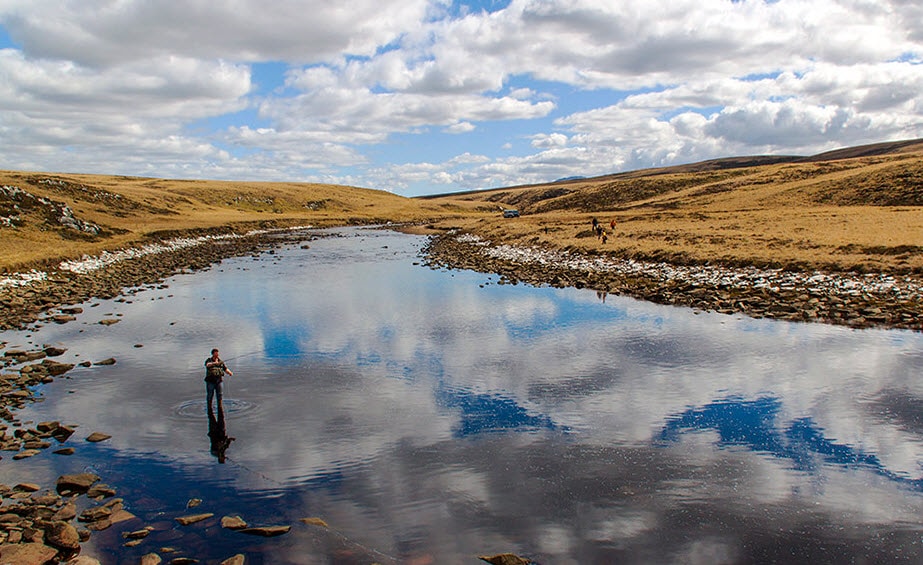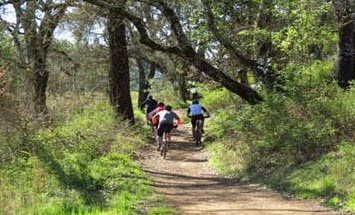
Introduction
A rangefinder is a tool for estimating the distance of an object before shooting it. There are different types of rangefinders designed to perform different operations. There are those specifically designed for golf activities while others are designed for hunting activities. However, you can choose one to perform both activities. You just have to put up with some limitations, but a good rangefinder will serve both purposes. However, for you to buy a rangefinder that will serve both your purposes, there are some things that you should put in mind. This article is designed to help you make the right decision when looking for a rangefinder.
Page Contents
Factors to consider to consider when using one device for both activities
- Specific features of the activity– The one for hunting is designed to cover longer distances. There is a possibility of pre-loading it with ballistic data, and on top of that possess more complex Most of the hunting rangefinders have a concealment cover to prevent being spotted by the prey. This will help you to maximize the capability of the tool as well as enhance your skills. Rangefinder for golf is designed to have features like short distance calculator to measure the distance between you and the target, club suggestions, swing rate measuring and simple reticles. If you use one rangefinder designed to perform only one specific task, you will end up missing on the other target. This is the reason as to why we recommend a rangefinder which can serve to purposes rather than buying two rangefinders for both activities. Though performance will be compromised, you will save money by just acquiring one. You have to only check on the quality and buy just one that will suit both activities.
- Recheck the Yardage Distances- Rangefinders for hunting will offer much more yardage distance because their target is above 80 yards away. On this case, a rangefinder designed for golfing only may not serve you during hunting unless you are shooting for a distance of 200 yards. When dealing with ranging distance, golf rangefinders are not adequate. They offer less yardage distance as compared to hunting rangefinders. Golf rangefinders will offer target ranging distance of about 500 yards and the ranging distance being below 400yards to the target. On this case, the hunting rangefinder will work for golfing but not vice versa. Yardage distances are very vital in both activities, and therefore you are advised to be careful on matters of changing weather conditions and heat mirage which plays a very significant role on how your rangefinder detects the distance readings.
- Consider Distance Difference- The primary role of the golf rangefinder is to detect the object that is near to you by using the First Target Priority Mode and ignoring distant objects such as animals and golfers. On the other hand, a hunting gadget relies on Distant Target focus (priority) Mode to find the distant objects but ignores distractions that are closer such as trees. A rangefinder equipped and designed with both distant and nearest modes is the best because it will give you an added advantage. It can be used in both sports. Some examples of such rangefinders include Nikon Monarch, Nikon COOLSHOTt AS, and Nikon COOLSHOT 40i. They are designed in such a way that you can toggle between nearer and modes that are distant by setting the focus priority modes as per the kind of activity or sport you want to engage on.
- Essential for Weatherproof– You have to acquire a rangefinder which can withstand weather changes in both hunting and golf by ensuring that it is waterproof. An example of a superior rangefinder that can do the job properly for both golf and hunting is Leica Pinmaster ll. It can survive underwater, and this shows that it can endure lousy weather conditions.
- Display Considerations- Both these two gadgets have units with both LED and LCD. This can be an advantage or a disadvantage depending on what time of the day it is. Usually golfing is done during the day while hunting is done early in the morning or late in the evening. Always use the LED displays during cloudy days. It makes it easier to hunt as the day It is designed in a manner that you can adjust brightness allowing you to observe or to see the readings clearly. The only disadvantage to this is that it can destroy your vision, especially when hunting in the evening hours. The best choice that you can use in these two sports is a rangefinder with both backlight and LDC backlight. This will ensure that your night sight or vision is not interfered with and hence your performance will be improved. The only disadvantage in this is that it is almost impossible to find it in backlight option as it is only common on the hunting models. The best example of such rangefinder is Nikon Monarch Laser 1200.
What features count the most on a rangefinder?
Regardless of the activity, you use the rangefinder for, you should check out a few features that count for the performance. Here are the features that matter most on a rangefinder for both hunting and golfing:

Max distance
The maximum distance is essential to check out when buying a rangefinder. You need a rangefinder that covers several hundred yards more than you want to measure, so you are never too far from your target to achieve an accurate readout.
Laser rangefinders present two maximum distance numbers: one for reflective targets such as specialized targets and golf flags and one for non-reflective targets like a game animal. Laser rangefinders perform according to the light reflection so that the reflective range will be higher than the non-reflective range. Think about when you will use the rangefinder the most and pick your model accordingly. If you plan to use it primarily for deer hunting at 400 yards or less, a rangefinder with a non-reflective range of 600 to 800 yards will be just fine.
It’s the same with golf rangefinders, where you should select a model with a maximum range higher than the longest hole you intend to play on. You won’t need to look for miles with golfing, but you will need to cover a great distance when hunting. For both sports, a rangefinder with 600-yards coverage will be enough. If you want to be extra safe, get a 1000-yard rangefinder.
Size and life span
The most important thing when checking out the size of the rangefinder is to get a unit that feels comfortable in your hand and ensures effortless access to the controls. If your hands are large, you will find a small compact rangefinder challenging to use and to range.
You don’t want to buy a rangefinder every six months, so be willing to buy a durable rangefinder right from the start. Please pay attention to its size; it should fit in your pocket for effortless carry. Take a look at the casing and seek that primary materials are weatherproof. You won’t need a weatherproof rangefinder because you won’t play golf in the rain. It’s not the same with hunting, where the chances to hunt in the shower are never null.
Magnification
The magnification refers to how zoomed-in the image will be. If your rangefinder has a 6x magnification, the image will look six times larger than without any device. When you magnify far-away objects, it will be easier to place the reticle of the rangefinder right on your target, which provides you with the most precise distance information. Keep in mind that the higher the magnification is, the darker the image and the smaller the field of view will become.
6x magnification will offer a good balance between image clarity and zoom. However, you don’t need so much magnification when you play golf. Best rangefinders present magnification that goes up to 8 or even 10x. You shouldn’t pay the extra buck for such models unless you’re an avid golfer.
Modes
Modern rangefinders present various modes that modify the way the rangefinder measures distance. Even if they’re not mandatory, the extra modes and features will offer information that improves your performance afield.
Scan mode
The rangefinder will constantly measure the distance between you and your target in a scan mode—you have to hold the button. The mode is beneficial when you range a moving target, especially long-range.
Rain/fog mode
This mode eliminates the effects of foggy or wet weather on the rangefinder’s measurements. The water droplets might refract the laser so that the distance reading might be less accurate in wet conditions. A rain mode will eliminate refraction and provide you with a precise reading, regardless of the weather conditions.
Angle compensation mode
Also known as the slope compensation, the angle compensation mode offers you the distance to the target while considering the incline/decline to the target. It will help you compensate when dropping the bullet/ball and help you aim correctly. Angle compensation isn’t permitted in most golf tournaments, but you will be able to turn the function off with most models.
Extra features
The bells and whistles are essential, especially for golf rangefinders. The proper rangefinder can really improve your performance. Here are some of the features to look for:
Pin seeking technology
Many of the courses will be uploaded with a rangefinder, and the pin-seeking technology helps you discover the pin easier. It improves your precision as well.
Jolt
Jolt technology is typically standard with Bushnell models and speeds up finding the pin.
Display
The display is essential with a rangefinder. An easy-to-read display will help you run your calculations faster and easier.
Precision
No rangefinder is of any good unless it’s accurate. Top models are accurate within 1-yard of the target so pay attention when buying.
How are hunting rangefinders different from golf models?
Both kinds of rangefinders have been created to measure the distance between you and another point in the space. It doesn’t matter much if the point in the distance is an animal, a tree, a flag, or something else. Every rangefinder is made for a specific activity, so the models made for hunting differ from those created for golf. Here’s how:
Priorities
Golf rangefinders are made with long battery life and durability, whereas models for hunting are more about weatherproofing and effortless carry. The precision of golf models surpasses the accuracy of hunting models, whereas the latter will present a more extended overall range.
Features
When you look at golf and hunting rangefinders, you will notice that they differ in terms of features. Golf models come with golf-specific features such as pin lock and flag lock—they’re not present in hunting models. At the same time, many rangefinders for hunting have a camo-print exterior which you will not see in models for golfing.
Price
You will typically use a rangefinder in golfing for several hours on several days a week; this won’t happen with hunting models. Therefore, hunting rangefinders are made with less expensive parts, which explains the lower price tag with hunting models.
Conclusion.
For any sport, you want to undertake, whether hunting or golf, we encourage you to choose the right rangefinder of the highest quality. We recommend that you select the one which can perform both tasks. This will allow you to save some coins when purchasing your gadget. One has to carefully choose a laser rangefinder with appropriate features and menu options to fit both hunting and golf because not all of them have these features.








